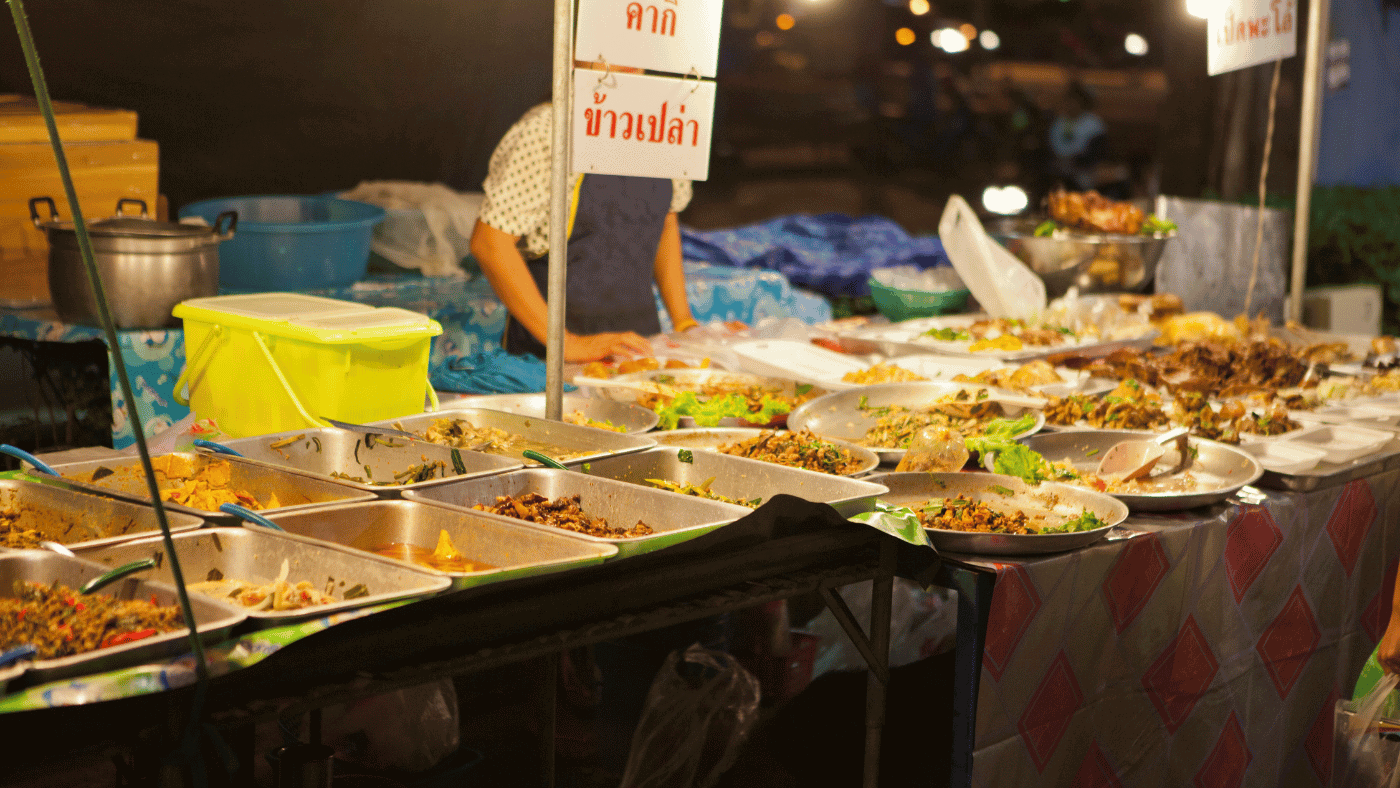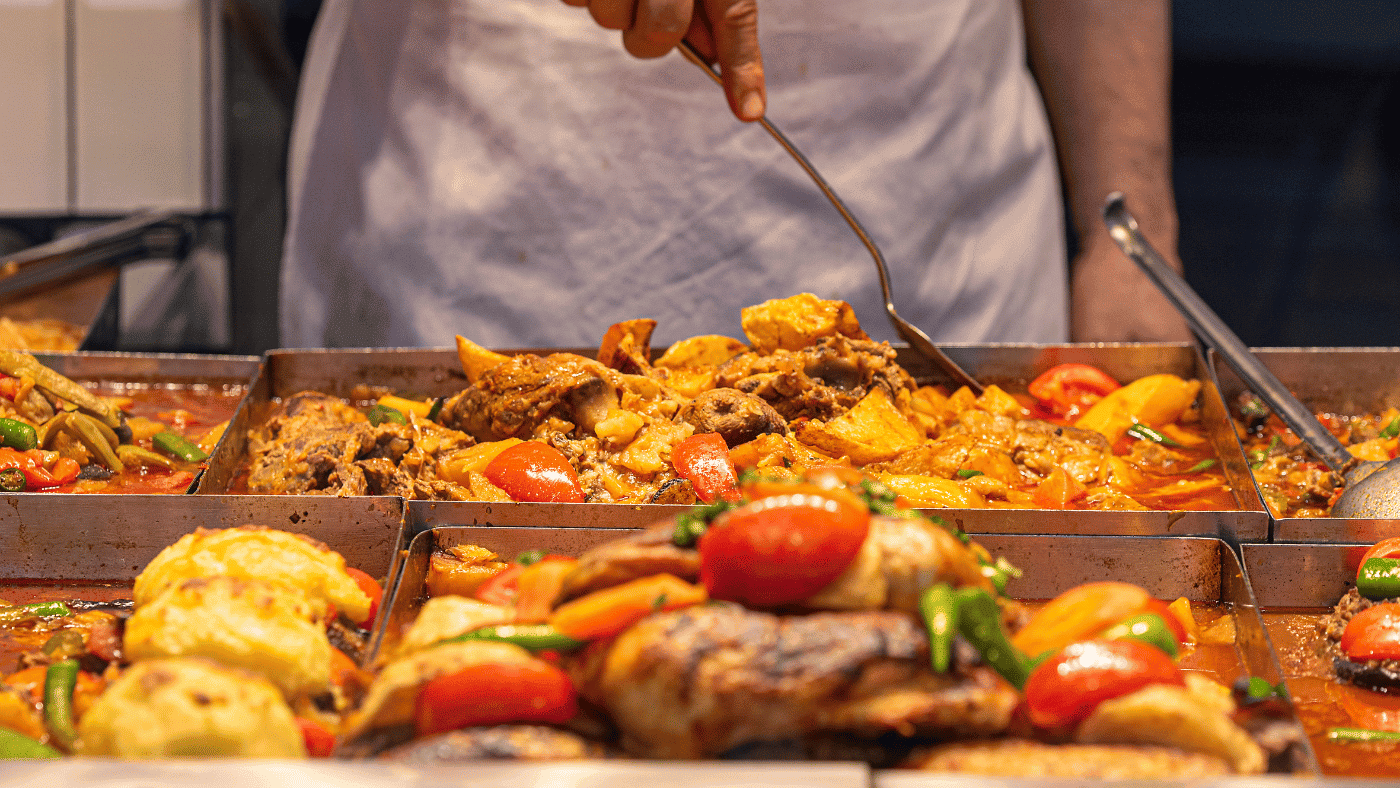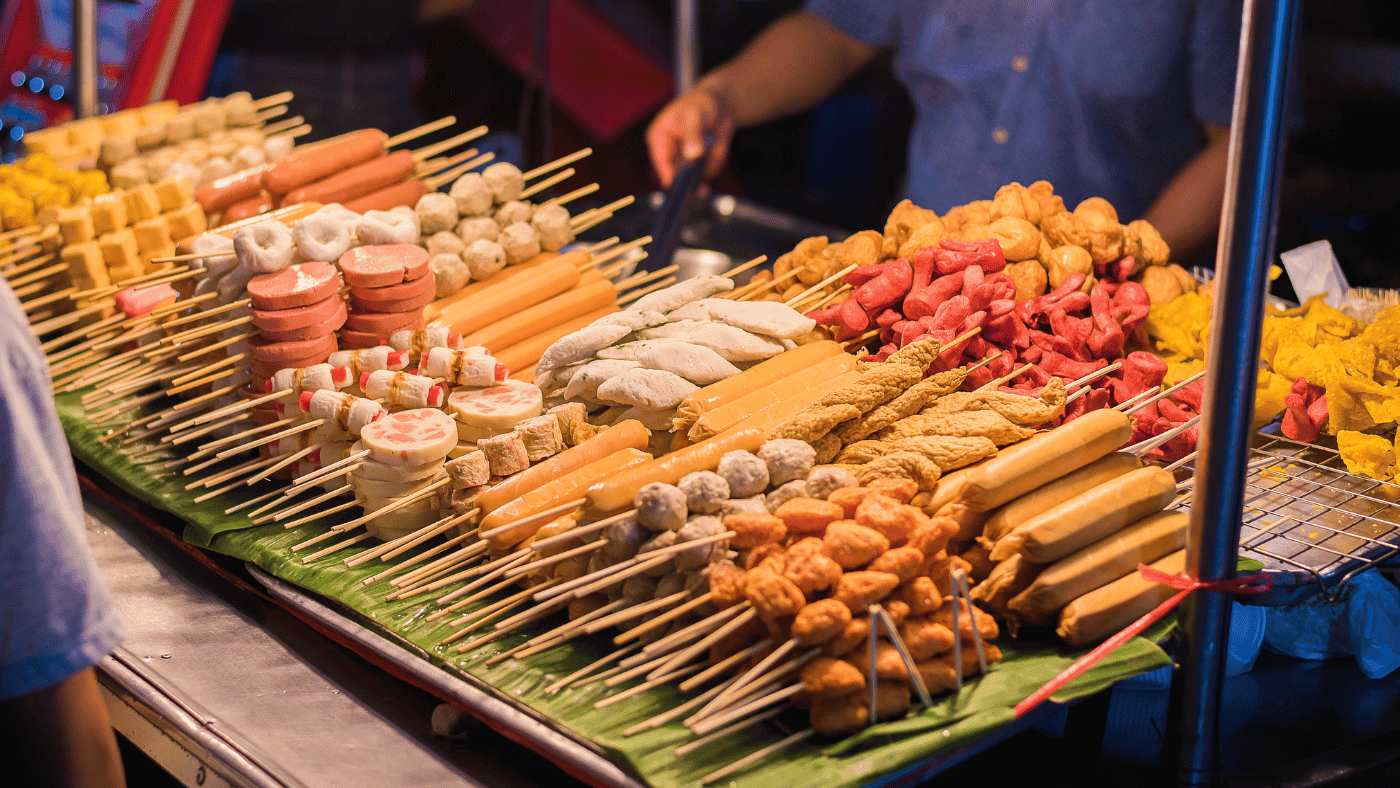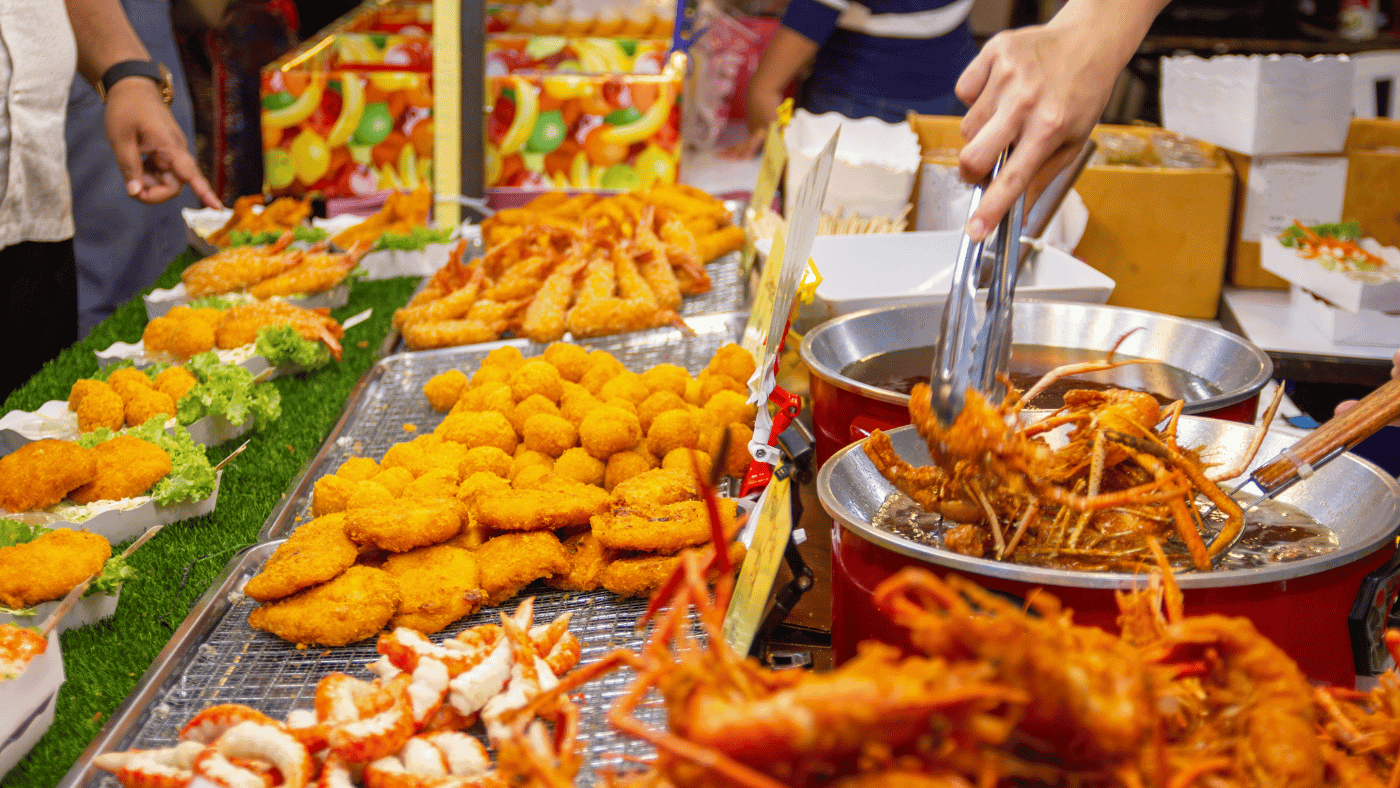Thailand is a country renowned for its delicious street food. Whether you’re exploring the vibrant streets of Bangkok or the more laid-back vibes of Chiang Mai, you’re sure to encounter an array of mouth-watering dishes served up by friendly locals in street food stalls. But with so many options to choose from, how do you know where to start? In this article, we’ll take you on a journey through the rich history of Thai street food, highlight some essential dishes to try, and offer tips on navigating the bustling street food scene like a pro.
The Rich History of Thai Street Food Stalls

Thai street food has a long and fascinating history, dating back centuries. Food vendors peddling their wares have always been a common sight on the streets of Thailand, and the practice of cooking and selling food outside dates back to ancient times. Over the years, Thai street food has evolved and adapted to reflect changes in the country’s economy, politics, and culture. Today, it’s a beloved and essential part of Thai cuisine.
Origins of Thai Street Food
The origins of Thai street food can be traced back to the bustling markets that sprung up throughout the country during the Ayutthaya period (1350-1767). These markets were a hub of activity, with traders and vendors selling everything from fresh produce to textiles and handicrafts. Naturally, food was also a big part of the market scene, and vendors would sell anything from grilled meats and skewers to noodle dishes and curries.
The early street food vendors were often women who would set up stalls outside their homes to sell food to passersby. They would prepare dishes using ingredients that were readily available to them, such as rice, vegetables, and spices. These early street food vendors were the pioneers of Thai street food and laid the foundation for the diverse and delicious cuisine we know today.
The Influence of Neighboring Countries
Over time, Thai street food was also influenced by the cuisine of neighboring countries such as China, India, and Malaysia. The Chinese, in particular, had a significant impact on Thai street food, introducing dishes such as noodle soup and stir-fried noodles. Indian cuisine also contributed to Thai street food, with curries and other spicy dishes becoming popular on the streets.
One dish that has become a staple of Thai street food is the ubiquitous pad thai. This dish, made with stir-fried rice noodles, eggs, tofu, and shrimp, is thought to have been influenced by Chinese noodle dishes and was popularized in Thailand during the mid-20th century. Today, pad thai can be found on almost every street corner in Thailand and is enjoyed by locals and tourists alike.
The Role of Street Food in Thai Culture
Thai street food plays a vital role in the country’s food culture, providing tasty and inexpensive meals that can be enjoyed by everyone. From busy city workers grabbing a quick lunch to families out for an evening meal, there’s something for everyone to enjoy on the streets of Thailand. Street food is also a significant aspect of Thai social life, with locals gathering around food carts and stalls to chat and catch up with friends.
Many Thai street food vendors have been plying their trade for decades, and their stalls have become institutions in their communities. These vendors often have loyal customers who have been coming to their stalls for years and have become part of the fabric of Thai street food culture.
Despite its popularity, Thai street food has faced challenges in recent years. In some areas, street food vendors have been forced to move or shut down due to concerns about hygiene and safety. However, efforts are being made to preserve and promote Thai street food, and it remains an essential part of the country’s culinary heritage.
In conclusion, Thai street food is a fascinating and delicious aspect of Thai culture that has a rich history dating back centuries. From its humble origins in bustling markets to its current status as a beloved culinary tradition, Thai street food has evolved and adapted over time to reflect changes in Thai society. Whether you’re a local or a tourist, exploring the vibrant world of Thai street food is an essential part of any visit to this beautiful country.
Essential Thai Street Food Dishes to Try

No trip to Thailand is complete without sampling some of the country’s delicious street food. Here are some must-try dishes:
Savory Dishes
- Pad Thai – Stir-fried rice noodles with shrimp, tofu, vegetables, and peanuts.
- Som Tum – Spicy papaya salad with tomatoes, peanuts, fish sauce, and lime juice.
- Ka Pow Moo Kai Dow – Stir-fried minced pork with chili, garlic, and basil, served with rice and a fried egg.
- Khao Man Gai – Poached chicken and rice with a side of soup.
Sweet Treats
- Mango Sticky Rice – Sweet and creamy sticky rice served with fresh mango and coconut milk.
- Roti – Flaky, crispy bread with sweet or savory fillings such as banana and chocolate or egg and cheese.
- Khanom Krok – Coconut milk custard cakes cooked in a special cast-iron pan.
Refreshing Beverages
- Thai Iced Tea – Creamy and sweet black tea served over ice.
- Fresh Coconut – Fresh coconut water served straight out of the coconut.
- Nam Dok Anchan – A sweet and refreshing drink made with butterfly pea flowers and sugar.
Top Street Food Stalls in Thailand

While there are great street food options all over Thailand, some areas are particularly renowned for their fantastic flavors and variety. Here are some of the top street food destinations:
Bangkok’s Bustling Street Food Scene
Bangkok is the epicenter of Thai street food, with vendors lining the streets day and night. Head to areas such as Chinatown or Khao San Road for a diverse range of tasty dishes.
Chiang Mai’s Culinary Delights
Chiang Mai is famous for its Northern Thai cuisine, which features bold flavors and unique ingredients such as turmeric and tamarind. Check out the street food markets in the old city for some delicious eats.
Phuket’s Flavorful Offerings
Phuket is known for its fresh seafood, which can be found at many street food vendors along the coast. Other must-try dishes include the famous ‘mee hoon gaeng’ (curry noodle soup) and ‘moo hong’ (braised pork belly).
Off-the-Beaten-Path Street Food Gems
Some of the best street food can be found in lesser-known areas outside of the main cities. Take a trip to Thailand’s northeastern province of Isaan for some unique and delicious flavors.

With so much variety and activity on the streets of Thailand, it can be overwhelming to know where to start. Here are some tips for navigating the Thai street food scene:
Decoding Thai Street Food Menus
Most street food vendors in Thailand don’t speak much English, so it’s helpful to learn some of the common dishes and ingredients beforehand. Don’t be afraid to ask questions or point at dishes to indicate what you want.
Useful Thai Phrases for Ordering
Learning a few basic Thai phrases can go a long way in helping you navigate the street food scene. Try memorizing a few phrases such as ‘Mai pet’ (not spicy) or ‘Aroi mak’ (very delicious).
Tips for Enjoying Street Food Safely
To avoid getting sick from street food, stick to vendors with a lot of customers (a sign of fresh food) and avoid vendors with flies or other pests around their food. Another good tip is to watch the vendor cook your food to ensure it’s thoroughly cooked.
Conclusion
The street food scene in Thailand is a vibrant and exciting aspect of the country’s culture. From savory dishes to sweet treats and refreshing beverages, there’s a dish to suit every taste and budget. By following these tips, you’ll be able to navigate the Thai street food scene like a pro and discover some of the best stalls and vendors around.

